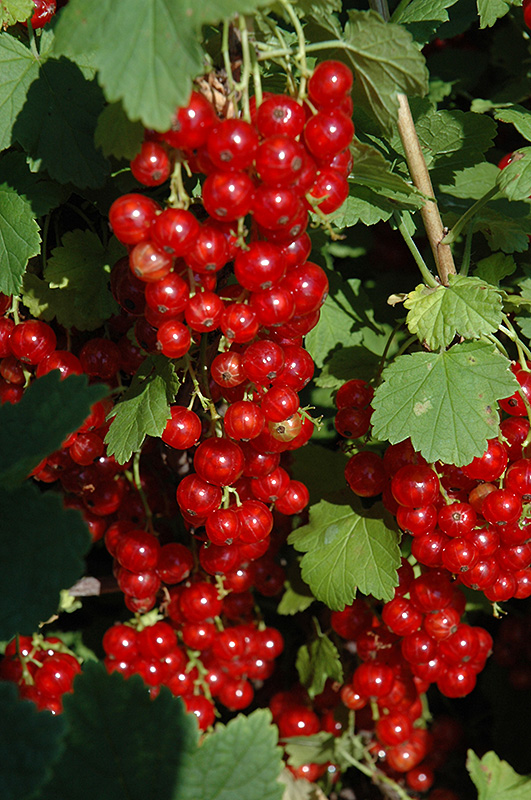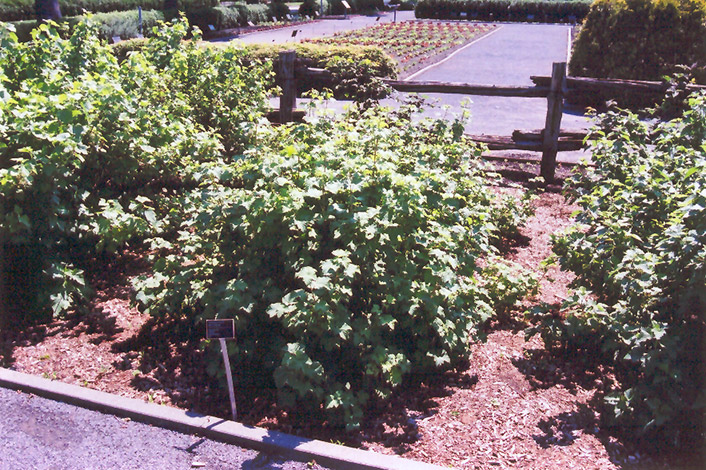Red Lake Red Currant Ribes rubrum 'Red Lake' Height: 4 feet Spread: 3 feet
Sunlight:
Hardiness Zone: 3 Other Names: R. sativum Description: A medium-sized shrub grown for its tasty red berries in summer, good for jam; quite stiff and upright, becoming looser with age; best for a reserved spot in the orchard or fruit garden, can be susceptible to mildew so allow for good air movement Edible Qualities Red Lake Red Currant is a small shrub that is commonly grown for its edible qualities, although it does have ornamental merits as well. It produces clusters of red round berries which are usually ready for picking from early to mid summer. The berries have a tart taste and a juicy texture. The berries are most often used in the following ways: Features & Attributes Red Lake Red Currant has rich green deciduous foliage on a plant with an upright spreading habit of growth. The lobed leaves turn yellow in fall. It features an abundance of magnificent red berries in early summer. This is a dense multi-stemmed deciduous shrub with an upright spreading habit of growth. Its relatively fine texture sets it apart from other landscape plants with less refined foliage. This plant will require occasional maintenance and upkeep, and is best pruned in late winter once the threat of extreme cold has passed. It is a good choice for attracting birds to your yard. Gardeners should be aware of the following characteristic(s) that may warrant special consideration; Aside from its primary use as an edible, Red Lake Red Currant is sutiable for the following landscape applications; Planting & Growing Red Lake Red Currant will grow to be about 4 feet tall at maturity, with a spread of 3 feet. It tends to fill out right to the ground and therefore doesn't necessarily require facer plants in front. It grows at a medium rate, and under ideal conditions can be expected to live for approximately 20 years. This is a self-pollinating variety, so it doesn't require a second plant nearby to set fruit. This shrub is quite ornamental as well as edible, and is as much at home in a landscape or flower garden as it is in a designated edibles garden. It does best in full sun to partial shade. It prefers to grow in average to moist conditions, and shouldn't be allowed to dry out. It is not particular as to soil type or pH. It is somewhat tolerant of urban pollution. This is a selected variety of a species not originally from North America.![]()
![]()
![]()
![]()
![]()
![]()
![]()
![]()
![]()
Characteristics
Applications
Ornamental Features
This guide is an online resource representing many of the varieties that we carry over the course of the season, and is intended for informational purposes only. Inventory varies seasonally, so we cannot guarantee that every plant will be in stock at all times - please contact the store directly for current availability. It does not include our entire selection of plants, so be sure to visit our store to see varieties that may not be represented on this list.



